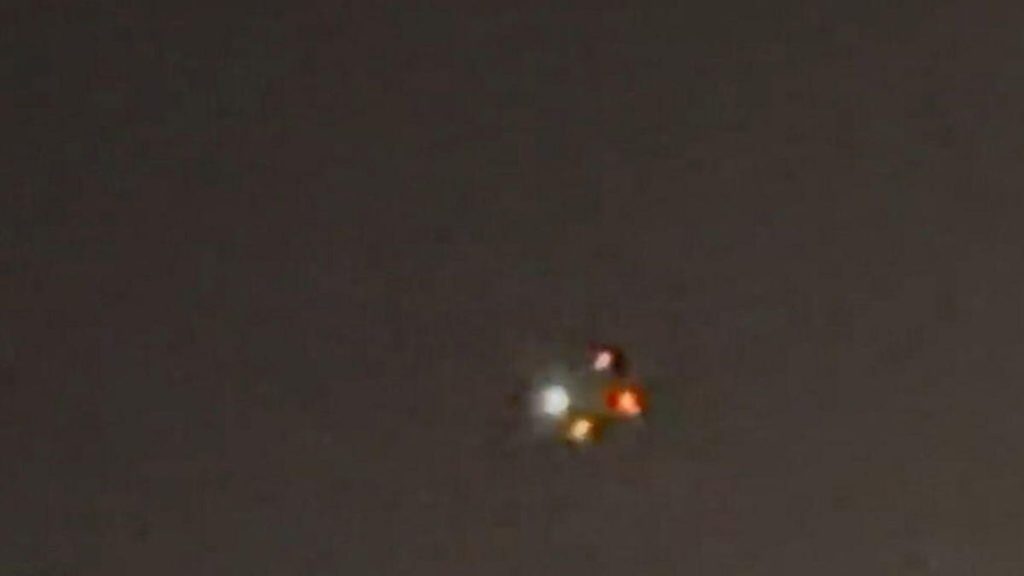The mystery surrounding the unidentified drones spotted over various states continues to deepen, a month after the initial sightings over New Jersey. Despite the spread of these sightings to other states, including Pennsylvania, Ohio, New York, and Maryland, the US government remains tight-lipped about the origin of these aerial vehicles. This silence has fueled speculation, ranging from foreign government surveillance operations to the possibility of extraterrestrial origins or even misidentified conventional aircraft. The ambiguity surrounding the nature and purpose of these drones has created an atmosphere of uncertainty and concern among residents in the affected areas.
The lack of concrete information from official sources has only exacerbated the public’s anxiety. The proliferation of theories, ranging from the mundane to the extraordinary, underscores the government’s failure to provide a clear and concise explanation. While some officials have downplayed the potential threat posed by these drones, the absence of a definitive narrative has left many residents feeling uneasy. The initial reports from New Jersey described formations of drones flying in orchestrated patterns, predominantly at night. This organized behavior, coupled with the drones’ size and apparent sophistication, has fueled suspicion of a coordinated operation, further adding to the enigma.
As the drone sightings persist and expand geographically, local and state authorities are taking proactive measures to address the situation. Lawmakers in several states, including New York, are considering deploying drone-detection technology to enhance airspace monitoring and prevent potential disruptions. This move comes in the wake of incidents where airports, including Stewart Airfield in New York and Wright-Patterson Air Force Base in Ohio, were temporarily shut down due to drone activity. Such incidents highlight the potential for these unidentified aircraft to disrupt air traffic and raise concerns about security vulnerabilities. The implementation of drone-detection systems aims to mitigate these risks and provide a clearer picture of drone activity in the affected areas.
While authorities grapple with the technological and logistical challenges of tracking and identifying these drones, the public debate over how to respond to these unidentified aerial objects has intensified. President-elect Donald Trump’s suggestion to shoot down drones has been met with warnings from officials, particularly the Federal Aviation Administration (FAA). The FAA cautions against civilian intervention, emphasizing the potential dangers of turning downed drones into hazardous projectiles. Shooting down a drone could inadvertently cause harm to people or property on the ground, transforming a surveillance concern into a direct safety threat. This underscores the complex legal and safety considerations surrounding any attempts to neutralize these drones.
The contrasting perspectives on how to deal with these drone sightings reflect the broader tension between public safety concerns and the need for measured responses. While some advocate for a more aggressive approach, emphasizing the potential security risks, others urge caution and adherence to established protocols. The FAA’s warnings highlight the potential unintended consequences of civilian intervention, underscoring the need for a coordinated and informed response from authorized agencies. This delicate balance between security and safety requires careful consideration of the potential risks and benefits of various courses of action.
Meanwhile, residents in the areas where the drone sightings began, particularly in New Jersey, continue to express frustration over the lack of transparency from official sources. The absence of clear communication, coupled with the proliferation of unsubstantiated rumors and speculation, has amplified the sense of unease and uncertainty within these communities. The government’s silence on the matter is perceived not only as a failure to address public concerns but also as a potential contributor to the escalating anxieties. This lack of information fuels distrust and undermines public confidence in the authorities’ ability to handle the situation effectively. The demand for transparency from residents underlines the importance of open communication and public engagement in addressing this unfolding mystery.










